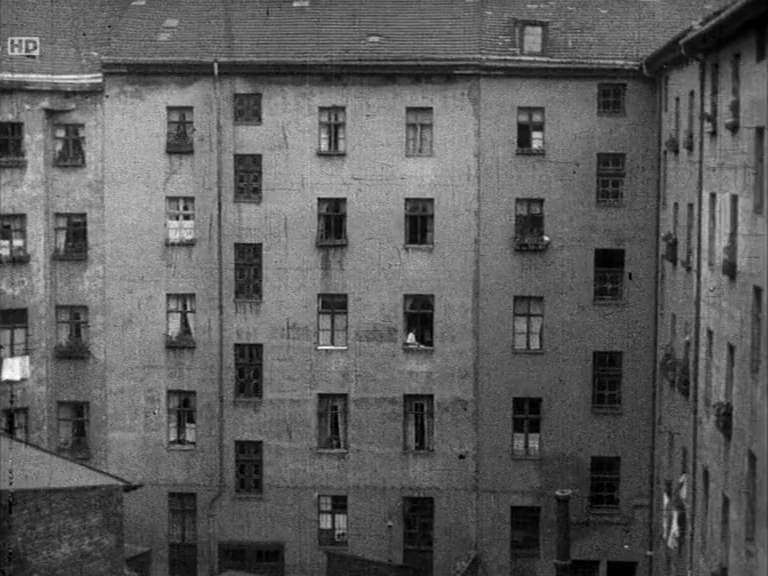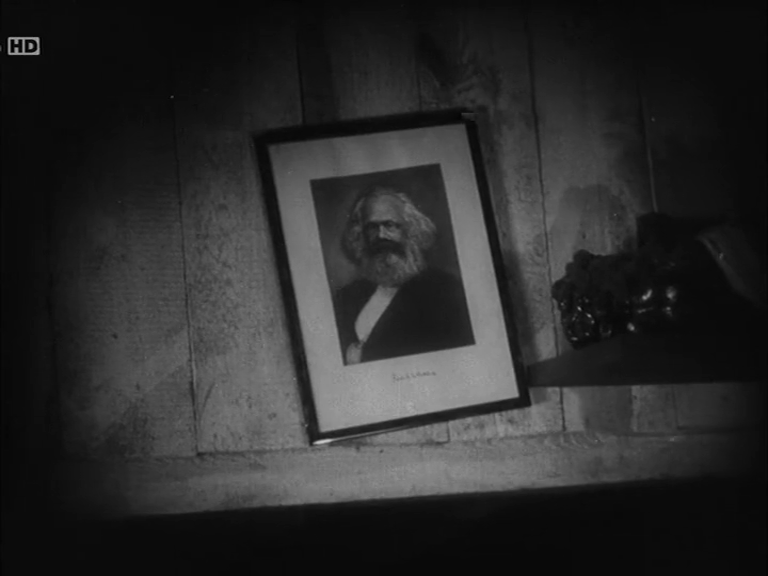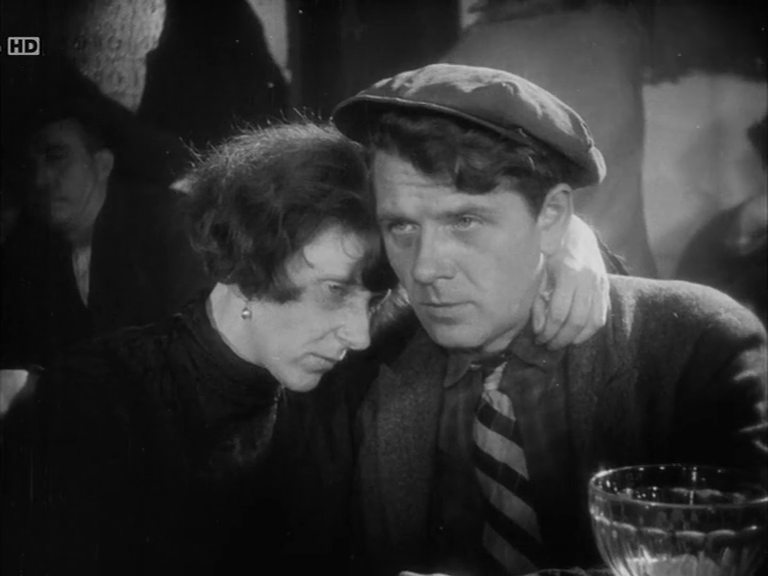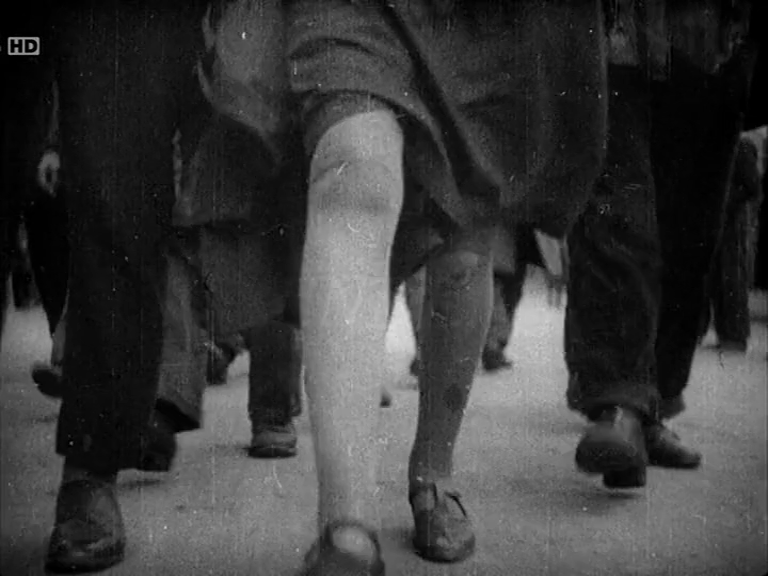Mother Krause's Journey to Happiness 1929 DEU SUB SPA, ENG, ITA TVRip x264
- CategoryMovies
- Typeh.264/x264
- LanguageGerman
- Total size1.9 GB
- Uploaded ByBoogerSan
- Downloads84
- Last checkedOct. 20th '25
- Date uploadedOct. 20th '24
- Seeders 6
- Leechers0

Year: 1929
Country: Germany
Director: Phil Jutzi
Cast: Alexandra Schmitt, Holmes Zimmermann, Ilse Trautschold, Gerhard Bienert
IMBD: Link
Language : German
Subtitles : Spanish, English, Italian

Tired of the “detective stories, royal dramas, Indian hunts, and Oriental fables” glutting German movie houses in the early 1920s, writer Bela Balázs called to replace them with the “heroic legends” of revolutionary struggle “whose tempestuous movement, monumental visuals, surprising entanglements … exceed anything that the bourgeois film can show.” Willi Münzenberg, the leftist media mogul of his day, had the deep pockets and infrastructure to answer the call.
In 1922, under the aegis of Workers’ International Relief (WIR), Münzenberg had effectively used newsreel footage to raise money to aid Russian famine relief. He later injected capital into the Soviet film industry and distributed the resulting films—a hall of fame of Soviet silents, including Aelita, Girl with a Hatbox, Pudovkin’s Mother, and Sergei Eisenstein’s Battleship Potemkin—in his native Germany. But the world was changing. Germany’s largest and most influential movie studio, Ufa, which had an impressive international reach, its own chain of theaters, as well as controlled a massive publicity machine, put Alfred Hugenberg at its helm in 1927. A very right-leaning mogul, Hugenberg was responsible for having, in the words of film scholar Klaus Kreimeier, “considerably eased Adolph Hitler’s rise to power.” But in the late 1920s defeat for Münzenberg was still not inevitable.
New restrictions limiting the importation of movies without sufficient investment in domestic production meant Münzenberg also had to produce films in Germany to continue distributing Soviet fare. So he took over the German Communist Party’s film production unit, which provided connections to talent and technical expertise, and tapped Mezhrabpom (WIR’s Russian counterpart) for actors and directors to help out. Under the banner of the Prometheus film collective, Münzenberg’s filmmakers combined the characteristics of its celebrated national cinema—the mobile camera and evocative compositions—with the era’s New Objectivity art movement to “show things as they really are,” adding an imperative to educate and motivate the masses.
Mother Krause’s Journey to Happiness (Mutter Krausens Fahrt ins Glück) was made during Prometheus’s most productive years, during 1927–1930 when film scholar Jan-Christopher Horak says the company released fifteen features. The success of The Living Corpse in early 1929 had yielded sufficient box office to fund Prometheus’s most expensive production later that year, Harbor Drift, a downbeat but revelatory street film depicting Germany’s lower classes trapped in a destructive cycle of poverty and corruption. Mother Krause depicts a family caught up in this cycle, with the mother of the title struggling to keep food on the table by selling newspapers and taking in lodgers, but, unlike previous Prometheus films, offers a solution to the hardships. On the continuum of style that culminated in the postwar neorealism of the Italians, Mother Krause is directed and photographed by Piel Jutzi who had shot newsreels for WIR and worked as camera operator on other Prometheus features. Just before Mother Krause, Jutzi had taken the same dual role on the Münzenberg-produced Hunger in Waldenberg, a documentary-style shoot in Silesian coal country.
Set in Berlin’s Red Wedding district, so nicknamed for its working-class residents who supported socialist and communist parties, Mother Krause was made collectively, counting on the participation of leftist artists who, like the writer Bela Balázs, had been rallying for a film to represent the masses and their struggles. Primarily a painter, Otto Nagel contributed to the script with anecdotes from his time spent with photographer and illustrator Heinrich Zille, whose axiom that an apartment can kill as easily as an axe infuses the film. Famous for hanging around Berlin’s poorer quarters á la Lautrec, Zille had crossed into the mainstream with his vivid caricatures of the city’s slums and its occupants—a lumpenproletariat revolutionaries usually dismissed as incapable of being roused to action.
Mother Krause is true to its Zillian muse catching its characters “unaware” in the opening that introduces the tenement neighborhood, in the leisure scenes at the fairground and lakeside beach, in the increasingly raucous wedding celebration, and around the crowded pub table where son Paul drinks away the family’s hard-earned income. Whereas Zille’s illustration style was garish and sometimes mocking, Mother Krause hews closer to Zille’s earlier photographic style, which inclines toward the spare and tender. When Paul lays the coin down to pay for rounds at the pub, we immediately recall his mother gingerly counting them out for the rent. That a coin is used for her final deliverance creates a devastating parallel.
The influence of artist Käthe Kollwitz, whose etchings put women at the center of the narrative, is also strongly felt. Mother Krause (Alexandra Schmitt) is the steadfast heart-muscle of the family and the story. Widowed by the war she is now the primary caretaker and breadwinner, her posture bowed as if in constant economic prayer, the physical minutiae of their survival passing through her small hands, rationing the coffee grounds, allocating the pfennigs earned. Her daughter Erna (a compelling Ilse Trautschold) meanwhile fights off the family’s loutish lodger and learns what lows are expected of women to make ends meet. Evident as well are the influences of Soviet cinema, to which Prometheus was so closely linked. The extreme close-ups, the startling angles, the quick-fire montages, and, from the very first, fluent in Eisensteinian metaphor with the camera’s initial sweep among Red Wedding stopping to contemplate pet birds in cages. Despite its ideological bona fides, the film displays empathy and humor, along with powerful visuals not easily forgotten.
Mother Krause’s filmmakers recognized that simply exposing audiences to the terrible conditions of Germany’s poor and working classes was not enough, that knowing does not necessarily spur doing. To that end, the film’s denouement outlines a path from witnessing to action, from the theater seat to the protest line. The meet-cute between Max the laborer (Friedrich Gnas) and Erna promises no damsel-rescued-from-distress finale but initiates her awareness of her family’s situation as part of a larger but solvable problem. When things hit a grim rock-bottom, Erna knows how to channel her hard-earned consciousness. Shot furiously, as if the marchers were trampling the camera, the resulting demonstration scene was trimmed by censors for release.
The year Mother Krause came out, Münzenberg urged revolutionary working-class organizations to look up from their printing presses and take note of what was happening around them. In an article in Film und Volk in November 1929, he warned of the forces marshaled against them: “When their bourgeois opponents are building film studios, creating distribution agencies, and acquiring movie theaters, they are doing the same thing as when they founded printing shops, created newspapers ….” If you want a revolution, he was saying, you have to reach the people where they gather. “Film,” he continued, “is not a matter of more or less pleasant entertainment. It is a political question of great significance.”
Those forces eventually swamped him. Prometheus releases did well in general, according to Horak, but competing with the thousands of movie screens showing slick escapist fare and newsreels that left the working poor out of the story, required more muscle than Münzenberg’s small empire could muster. When the Great Depression hit, Prometheus could barely hang on between box-office receipts. The budget for Mother Krause had to be cut because of cost overruns on Harbor Drift. Any skimping, however, passes masterfully on screen as style.
By 1932, the company could no longer hold out and Prometheus’s next planned feature, Kuhle Wampe, or Who Owns the World?, from a script by Bertolt Brecht, had to be financed by someone else. When the unthinkable happened and Hitler took over, Prometheus’s parent organization WIR “shipped as many of its prints as possible to Moscow for safekeeping,” according to an article in Cinema Journal, which further describes Münzenberg’s retreat: “The only part of his impressive film apparatus to continue significant work was Mezhrabpom, which turned out several anti-fascist films and served as a sanctuary for leftist filmmakers fleeing Germany.” Eventually Münzenberg fled Stalin, too, but the Nazis hadn’t forgotten him and hunted him down in the French Alps. The lumpenproletariat was in fact roused, and led onto the battlefields of World War II. (Shari Kizirian)

[ About file ]
Name: Mother Krause's Journey To Happiness.Phil Jutzi.1929.TVRip.mkv
Date: Mon, 02 Nov 2015 00:36:55 +0200
Size: 2,079,150,659 bytes (1982.832583 MiB)
[ Magic ]
File type: Matroska data
File type: EBML file, creator matroska
[ Generic infos ]
Duration: 02:13:17 (7997.04 s)
Container: matroska
Production date: Thu, 01 Jan 1970 02:00:01 +0200
Total tracks: 3
Track nr. 1: video (V_MPEG4/ISO/AVC) {ger}
Track nr. 2: audio (A_AC3) {ger}
Track nr. 3: subtitle (S_TEXT/UTF8) {spa}
Muxing library: libebml v1.3.0 + libmatroska v1.4.0
Writing application: mkvmerge v5.9.0 ('On The Loose') built on Dec 9 2012 15:37:01
[ Relevant data ]
Resolution: 720 x 576
Width: multiple of 16
Height: multiple of 32
Average DRF: 23.821239
Standard deviation: 0.924049
Std. dev. weighted mean: 0.72229
[ Video track ]
Codec ID: V_MPEG4/ISO/AVC
Resolution: 720 x 576
Display resolution: 768 x 576 (pixels)
Frame aspect ratio: 5:4 = 1.25
Pixel aspect ratio: 16:15 = 1.066667
Display aspect ratio: 4:3 = 1.333333
Framerate: 25 fps
Stream size: 1,885,189,484 bytes (1797.856792 MiB)
Duration (bs): 02:13:17 (7997.04 s)
Bitrate (bs): 1885.887262 kbps
Qf: 0.181895
[ Audio track ]
Codec ID: A_AC3
Sampling frequency: 48000 Hz
Channels: 2
Stream size: 191,928,576 bytes (183.037354 MiB)
Bitstream type (bs): AC3
Frames (bs): 249,907
Duration (bs): 02:13:17 (7997.024 s)
Chunk-aligned (bs): Yes
Bitrate (bs): 192 kbps CBR
Sampling frequency (bs): 48000 Hz
Mode (bs): stereo
[ Video bitstream ]
Bitstream type: MPEG-4 Part 10
User data: x264 | core 125 r2200 999b753 | H.264/MPEG-4 AVC codec
User data: Copyleft 2003-2012 | http://www.videolan.org/x264.html | cabac=1
User data: ref=5 | deblock=1:0:0 | analyse=0x3:0x113 | me=umh | subme=8 | psy=1
User data: psy_rd=1.00:0.00 | mixed_ref=1 | me_range=16 | chroma_me=1
User data: trellis=1 | 8x8dct=1 | cqm=0 | deadzone=21,11 | fast_pskip=1
User data: chroma_qp_offset=-2 | threads=1 | lookahead_threads=1
User data: sliced_threads=0 | slices=4 | nr=0 | decimate=1 | interlaced=fake
User data: bluray_compat=1 | constrained_intra=0 | bframes=3 | b_pyramid=1
User data: b_adapt=2 | b_bias=0 | direct=3 | weightb=1 | open_gop=1 | weightp=1
User data: keyint=25 | keyint_min=1 | scenecut=40 | intra_refresh=0
User data: rc_lookahead=25 | rc=2pass | mbtree=1 | bitrate=1886 | ratetol=1.0
User data: qcomp=0.60 | qpmin=0 | qpmax=69 | qpstep=4 | cplxblur=20.0
User data: qblur=0.5 | vbv_maxrate=14000 | vbv_bufsize=14000 | nal_hrd=vbr
User data: ip_ratio=1.40 | aq=1:1.00
SPS id: 0
Profile: [email protected]
Num ref frames: 4
Aspect ratio: 12:11 (4:3 PAL pixel shape)
Chroma format: YUV 4:2:0
PPS id: 0 (SPS: 0)
Entropy coding type: CABAC
Weighted prediction: P slices - explicit weighted prediction
Weighted bipred idc: B slices - implicit weighted prediction
8x8dct: Yes
Total frames: 199,926
Drop/delay frames: 0
Corrupt frames: 0
P-slices: 58134 ( 29.078 %) ######
B-slices: 132719 ( 66.384 %) #############
I-slices: 9073 ( 4.538 %) #
SP-slices: 0 ( 0.000 %)
SI-slices: 0 ( 0.000 %)
[ DRF analysis ]
average DRF: 23.821239
standard deviation: 0.924049
max DRF: 32
DRF<17: 0 ( 0.000 %)
DRF=17: 1 ( 0.001 %)
DRF=18: 1 ( 0.001 %)
DRF=19: 1 ( 0.001 %)
DRF=20: 369 ( 0.185 %)
DRF=21: 7567 ( 3.785 %) #
DRF=22: 699 ( 0.350 %)
DRF=23: 34906 ( 17.459 %) ###
DRF=24: 141061 ( 70.557 %) ##############
DRF=25: 10272 ( 5.138 %) #
DRF=26: 3444 ( 1.723 %)
DRF=27: 670 ( 0.335 %)
DRF=28: 188 ( 0.094 %)
DRF=29: 187 ( 0.094 %)
DRF=30: 167 ( 0.084 %)
DRF=31: 243 ( 0.122 %)
DRF=32: 150 ( 0.075 %)
DRF>32: 0 ( 0.000 %)
P-slices average DRF: 23.947913
P-slices std. deviation: 0.711971
P-slices max DRF: 32
B-slices average DRF: 23.946436
B-slices std. deviation: 0.724718
B-slices max DRF: 32
I-slices average DRF: 21.178221
I-slices std. deviation: 0.752879
I-slices max DRF: 29
This report was created by AVInaptic (01-11-2020) on 3-08-2024 01:11:17





Files:
Mother Krause's Journey To Happiness.1929- Mother Krause's Journey To Happiness.Phil Jutzi.1929.TVRip.mkv (1.9 GB)
- Mother Krause's Journey To Happiness.Phil Jutzi.1929.TVRip -ITA.srt (16.9 KB)
- Mother Krause's Journey To Happiness.Phil Jutzi.1929.TVRip -ENG.srt (16.6 KB)
Code:
- http://tracker.opentrackr.org:1337/announce
- udp://tracker.opentrackr.org:1337/announce
- udp://open.stealth.si:80/announce
- udp://tracker.torrent.eu.org:451/announce
- udp://open.demonii.com:1337/announce
- udp://inferno.demonoid.is:3391/announce
- udp://exodus.desync.com:6969/announce
- https://tracker.gbitt.info:443/announce
- udp://opentracker.io:6969/announce
- udp://open.demonoid.ch:6969/announce
- udp://bt1.archive.org:6969/announce
- udp://bt2.archive.org:6969/announce
- udp://bubu.mapfactor.com:6969/announce
- udp://epider.me:6969/announce
- udp://explodie.org:6969/announce
